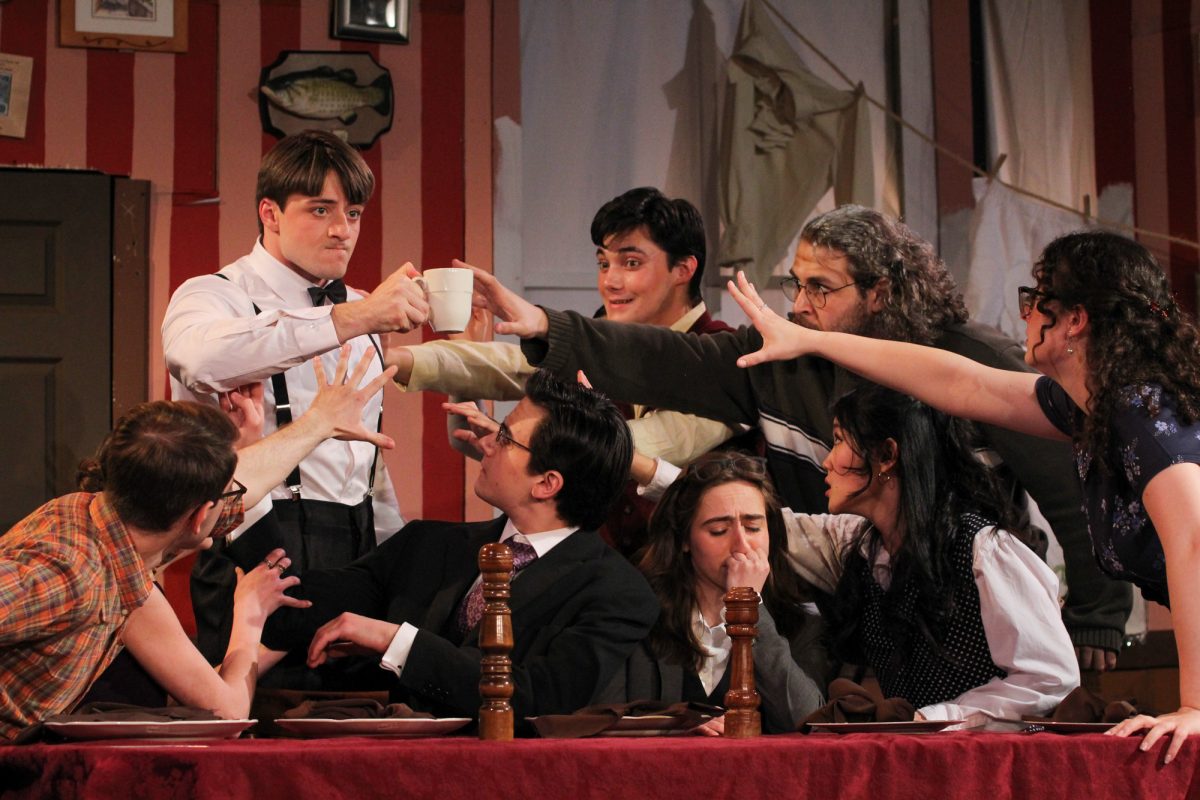By applying his architectural knowledge and techniques to his art work, Boston-based architect Malcolm Montague Davis (1933-2021) left an artistic legacy behind of transforming reality into delicate geometry.

Beacon Gallery, located in Boston’s South End, is currently showcasing the first-ever retrospective works by Davis.
After graduating from Harvard College and Harvard Graduate School of Design, Davis spent his life designing residential homes and buildings in Boston, Rome, Yangon and Myanmar. Some of his signature projects include designing the University of Beirut and the University of Yangon. After his retirement, Davis picked up brushes and embarked on his journey of fine arts.
“A lot of architects I think, are inherently creative people,” Christine O’Donnell, owner and director of Beacon Gallery, said. “They have that desire to be creative, but it doesn’t always translate into their art, whereas for Malcolm there was a direct translation. So for instance, he actually made paintings of the houses that he built.”
On his biographical page on Beacon Gallery’s website, Davis described his work as deriving from his “architectural drawings, which have been surveyed to yield visually stimulating compositions.”
Given that Davis’ work presents a combination of natural and industrial objects, Presley Ackeret, the gallery associate at Beacon Gallery who curated the exhibition, said that she hoped to “make it feel as though you were going through the day with his worlds.”
For example, while curating the artist’s series of American railroads, Ackeret aimed to create a sense of “traveling through America” through arrangements and installations.
“It was a pretty crazy experience, opening up his archives,” Ackeret said. “He has a whole lifetime of work that we brought out.”
With his sharp observation and genuine messages, Davis invites the audience of the gallery to briefly escape the mundane and dive into the world of abstract beauty — one that is more approachable than most would expect.
“I think that Davis’ work is kind of a good introduction for the general public to understand where contemporary art might come from because often we’re pretty disconnected to contemporary art,” Ackert said.
Less known to the public is Davis’ meticulous creative process. Faith Rubin Davis, the artist’s best friend and life partner, said that he would spend weeks writing about the environments that he immersed himself in.
“He would visit various sites in Maine to get a feel of the environment. And then he recorded the colors that he saw — the ocean, the vegetation, flowers and plants. And he wrote about that,” Faith recalled.
After expressing his thoughts on the objects through writing, Davis would build three-dimensional models that are around three-feet high to help observe the formation of their shadows.
“He would take the model and put it in the window of his studio to see where the shadows were at all times of the day,” Faith said. “Morning, noon and when the sun was setting, and each and every one of his paintings have shadows. And I think that’s what makes them fabulously interesting.”
Davis’ close attention to light is exactly what brings texture and depth to his work. While geometry is often viewed as flat and immutable, Davis manages to infuse perspectives and spatiality into his paintings.
Davis also has a stylistic way of applying colors.
“He doesn’t mix any colors, and only uses Benjamin Moore paint straight out of the can,” O’Donnell said. “He would keep track of every single color and every single placement of the color.”
According to Faith, Davis’ love of precision in lights, colors, and shapes derives from his unique personality.
“He was a very complex person because he never rushed into anything. He never charged forward. He always pulled back and studied things,” Faith said.
She stated that Davis was curious and observant, always asking questions that encouraged her to think slower, deeper and differently.
“Life has been more complete with Malcolm and anyone who has had their life touched by him is a more complete person because he made you think,” she said. “I miss his insights into not only the art in the art world and architecture in the architecture world, but really, life.”
























































































































Natalie Shinbach • Feb 17, 2022 at 10:55 am
Beautiful written , with deep understanding of Malcom Davis and his art .
Faith Rubin • Feb 15, 2022 at 3:20 pm
Yiran… you have written a beautifully accurate summation of Malcolm the man, the artist and the complex person he was!!! Although you have never met him, you understand his mindset and his process for creating every special piece of art. Thank you for hopefully presenting his work to the public and for your sensitivity in recognizing a unique and gifted artist!!! I look forward to meeting you at your convenience!!
Warm wishes,
Faith Rubin